
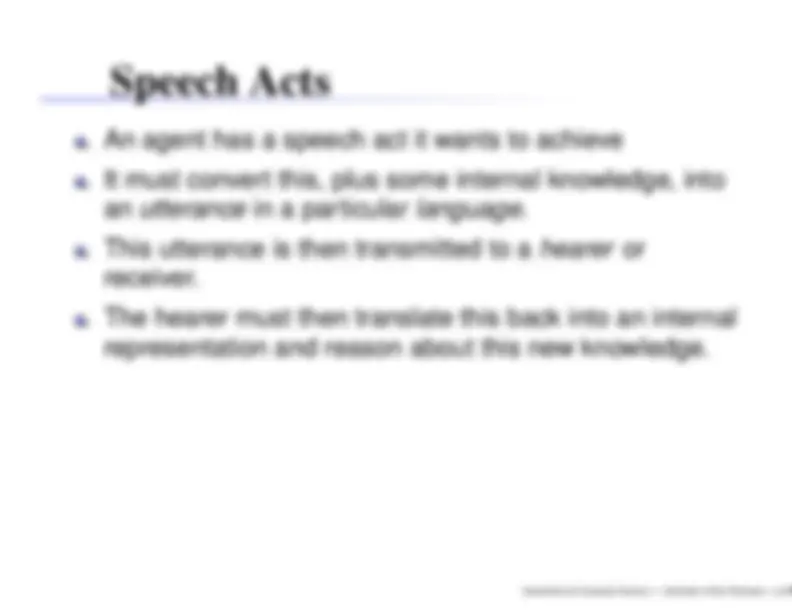
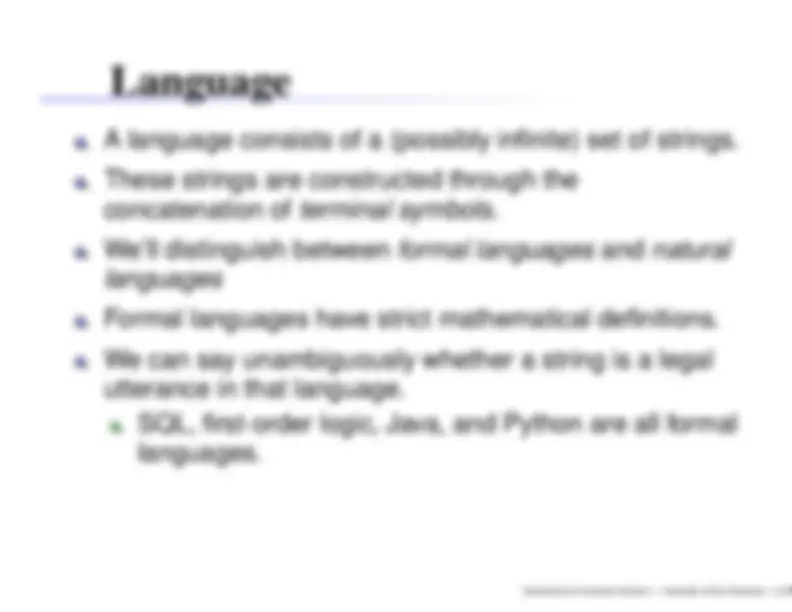
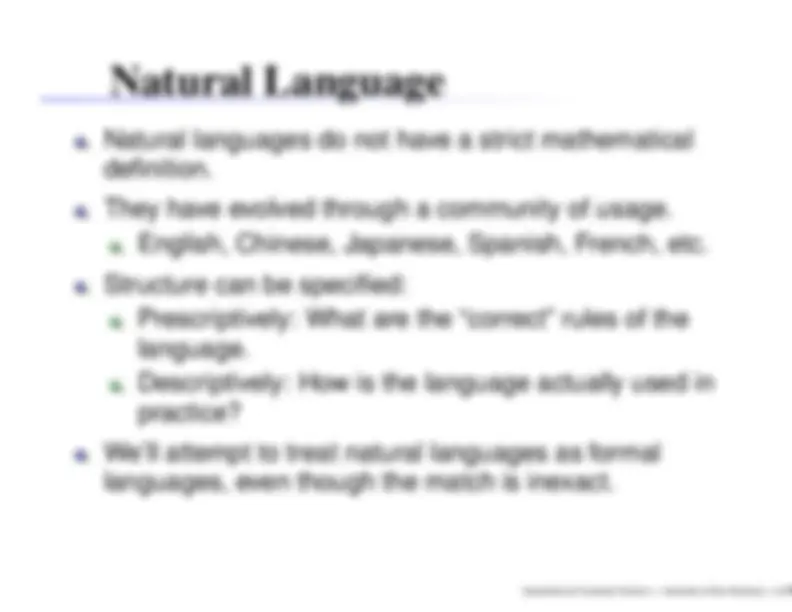
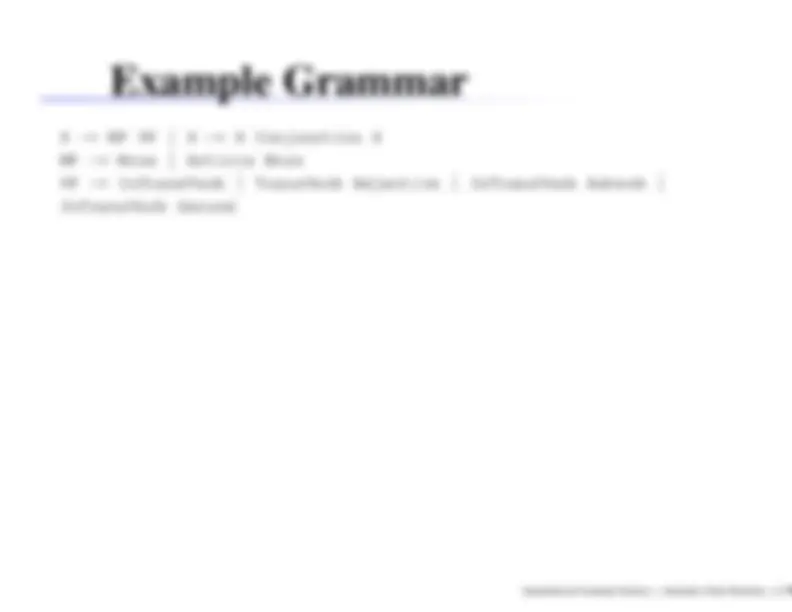
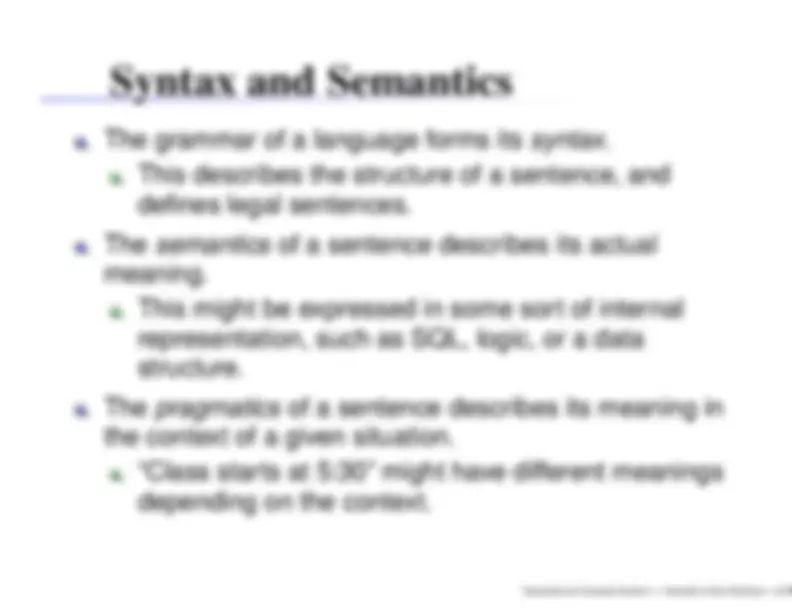
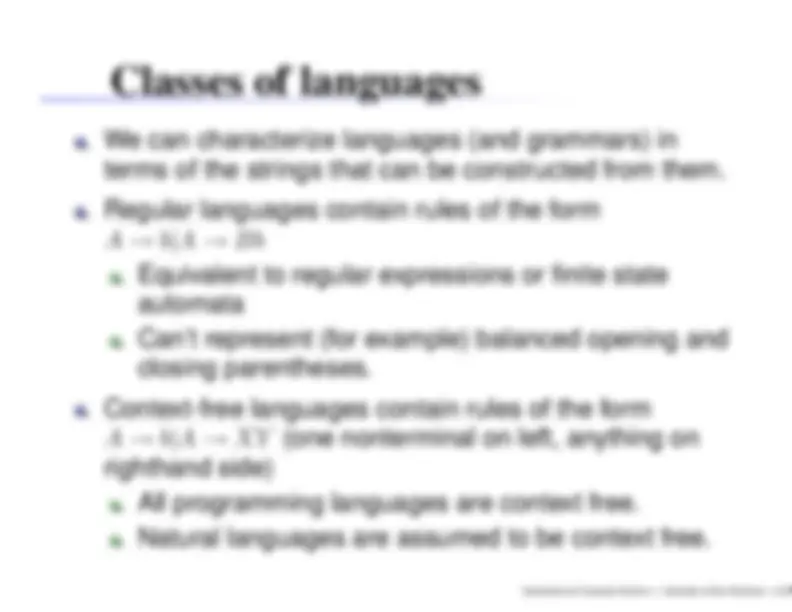
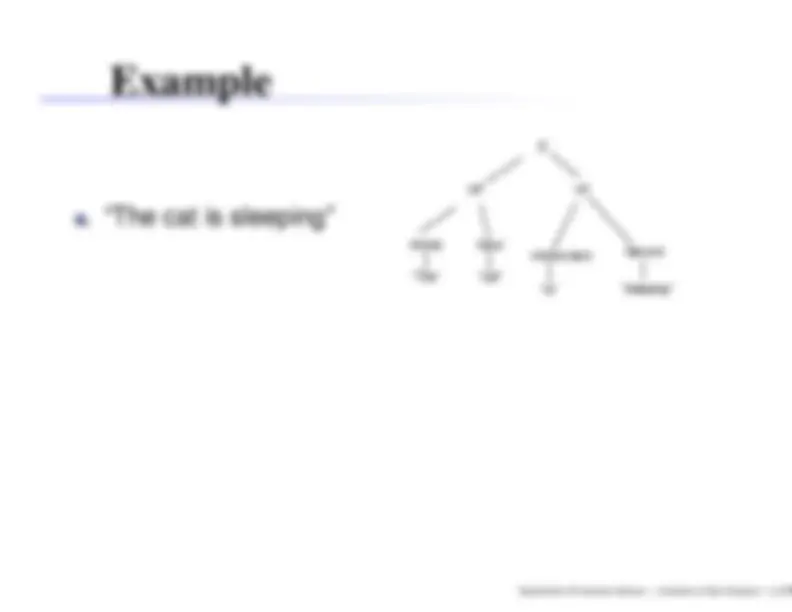
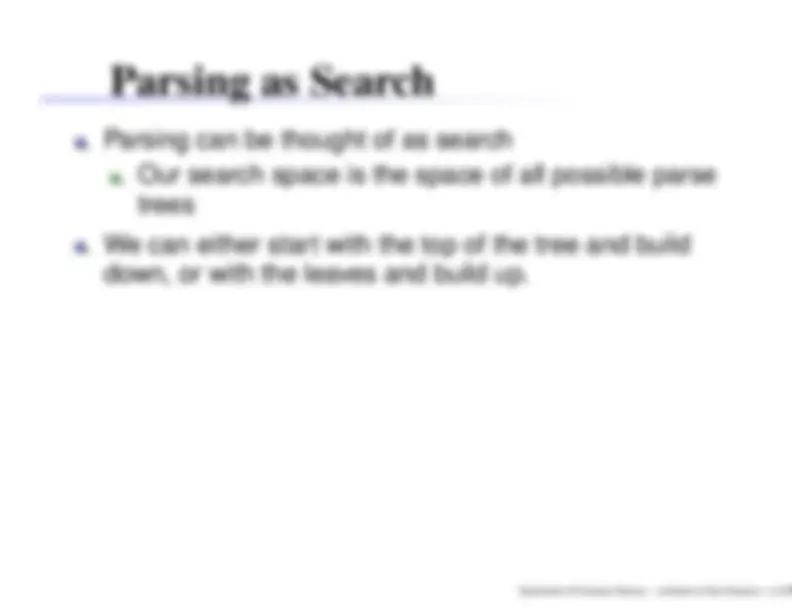
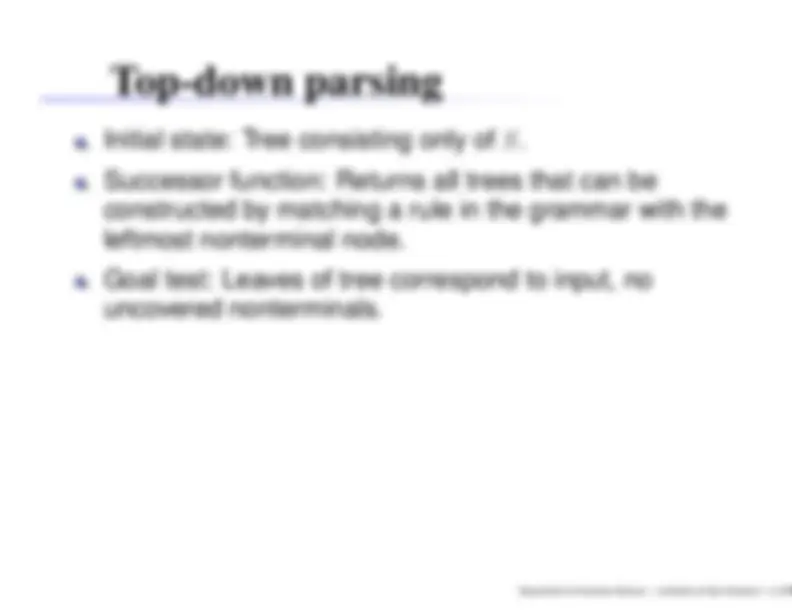
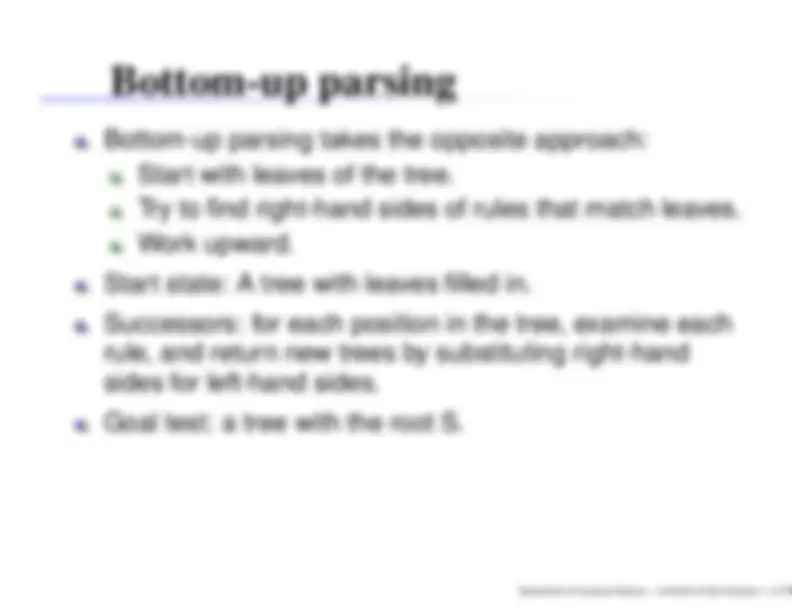
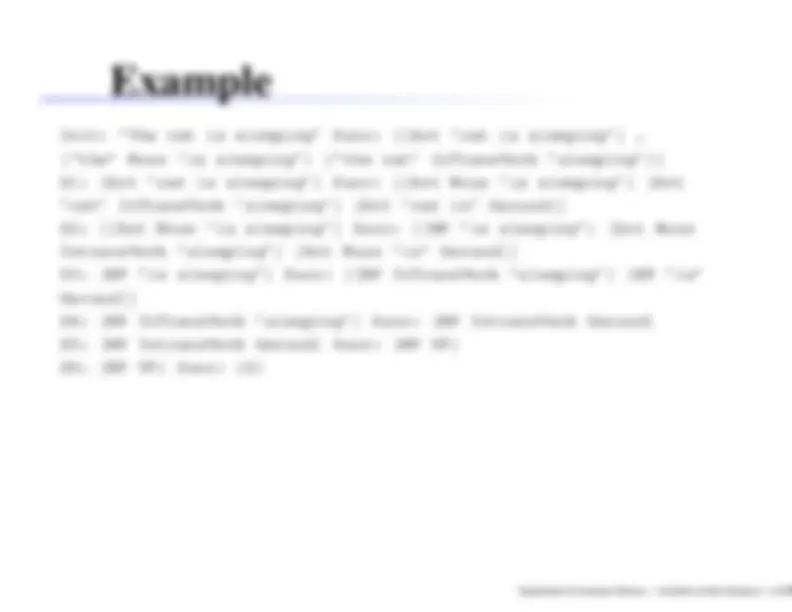
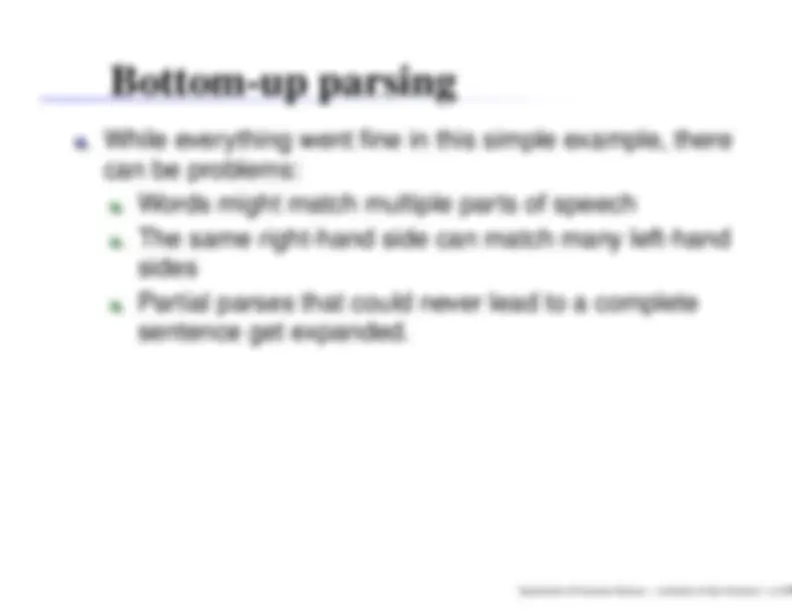
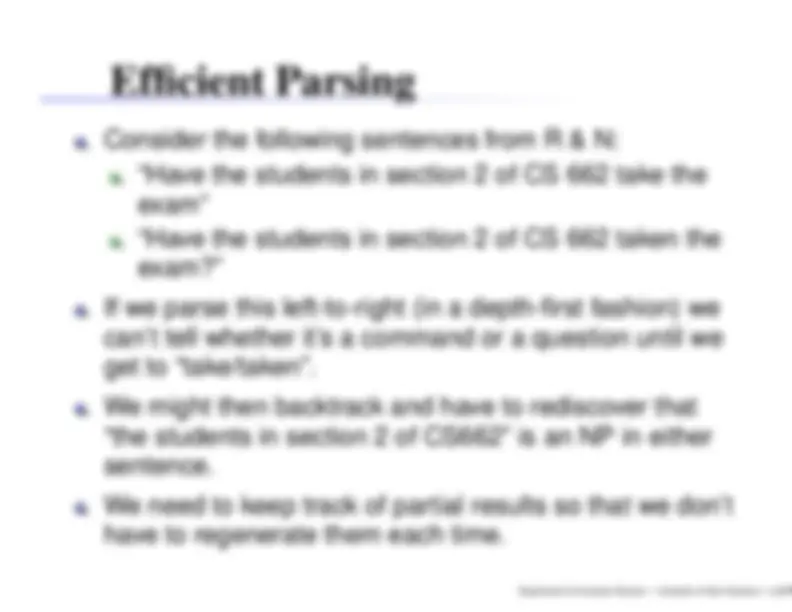
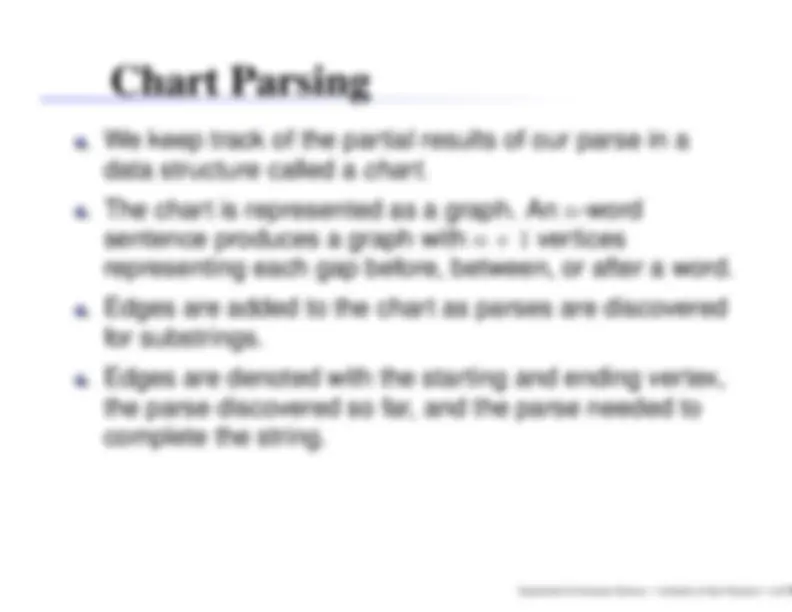
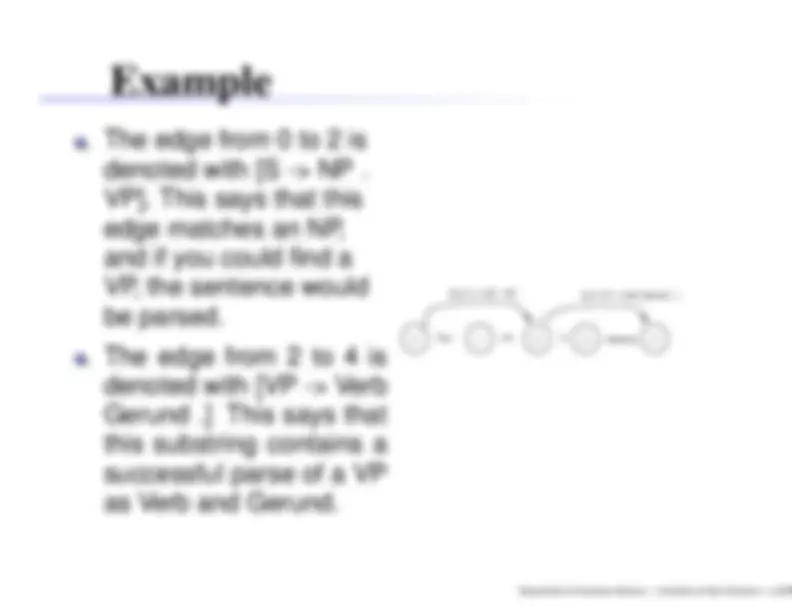
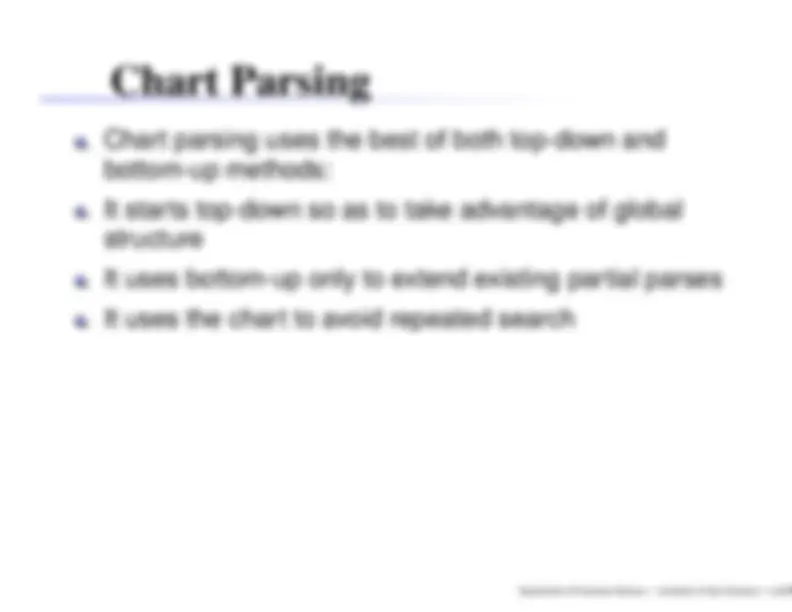
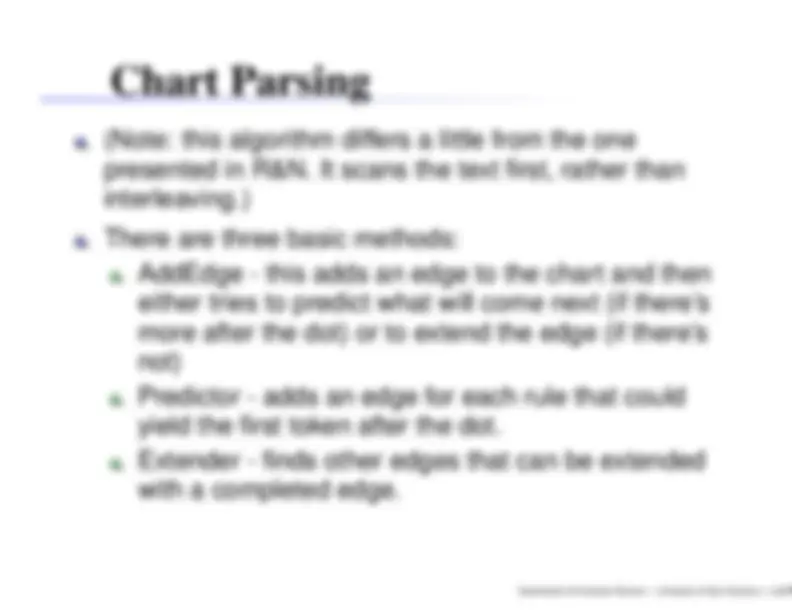
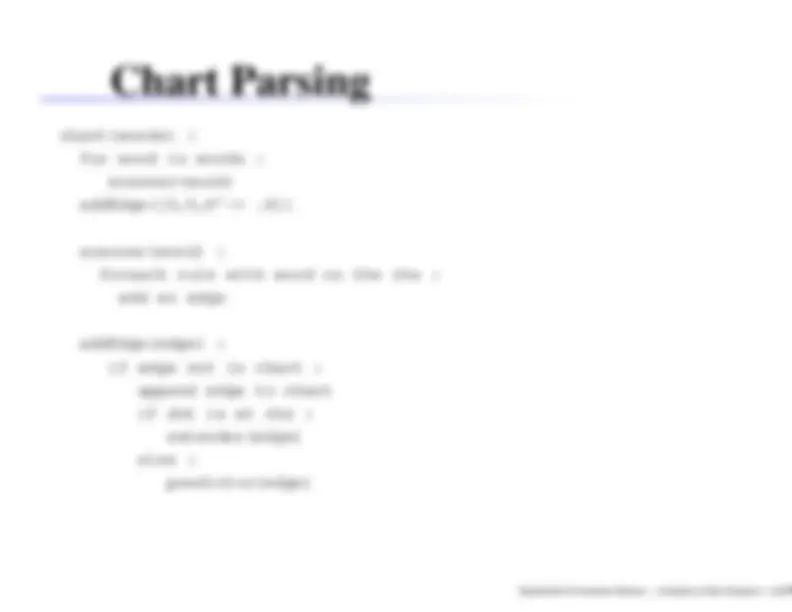
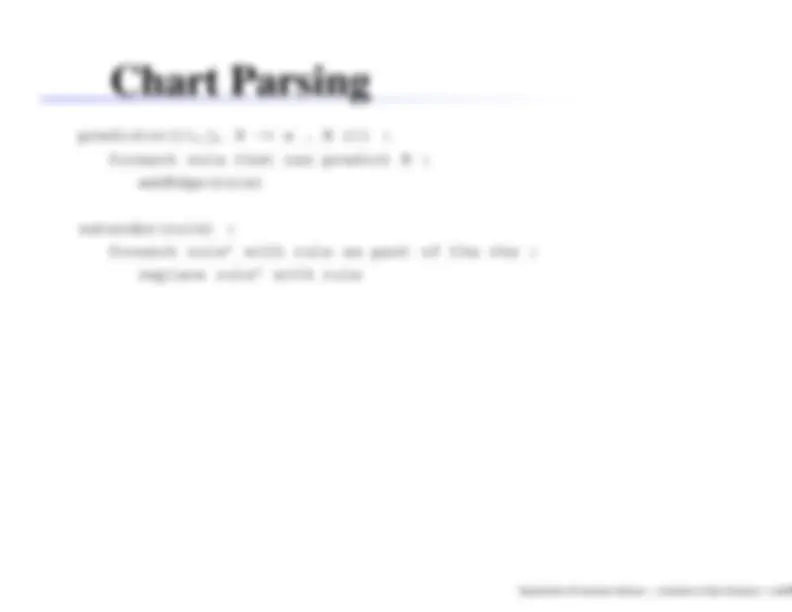
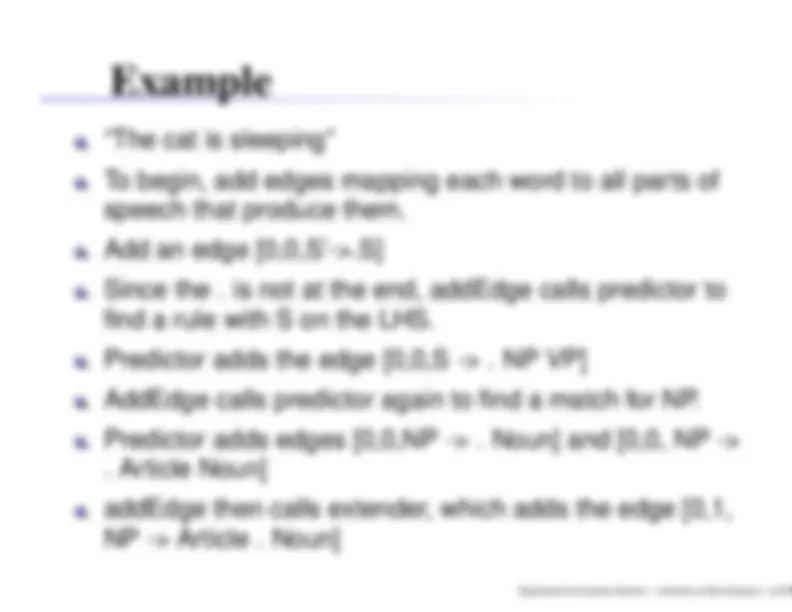
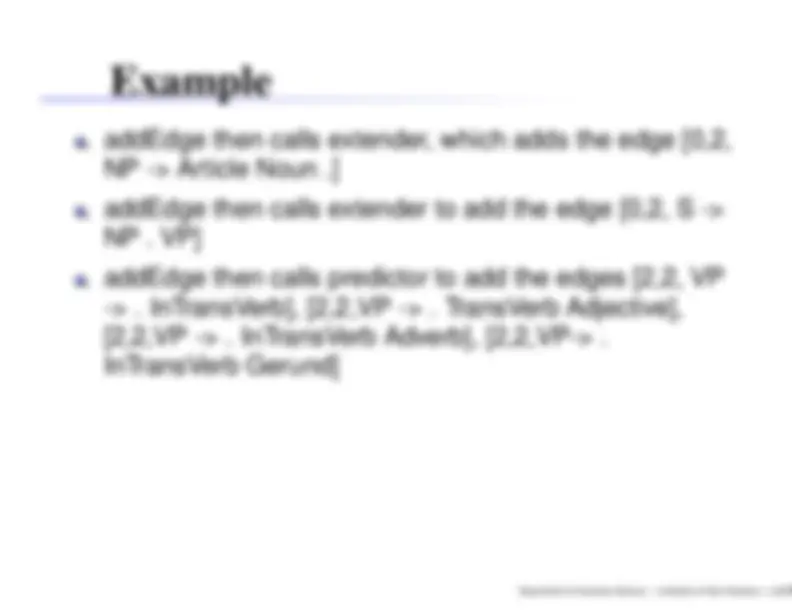
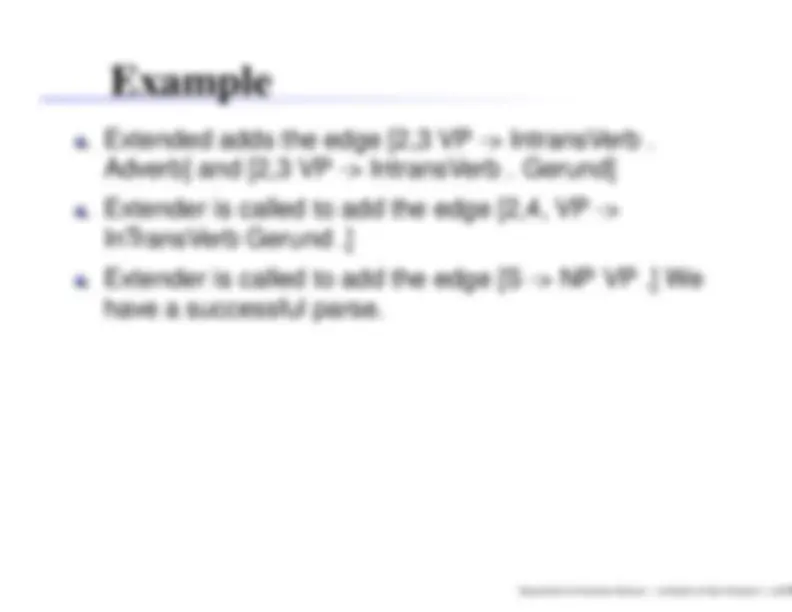
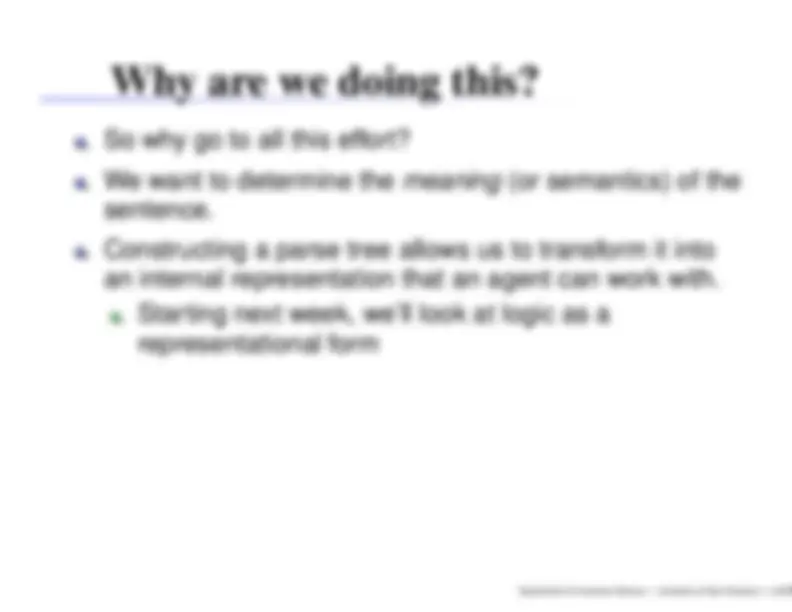
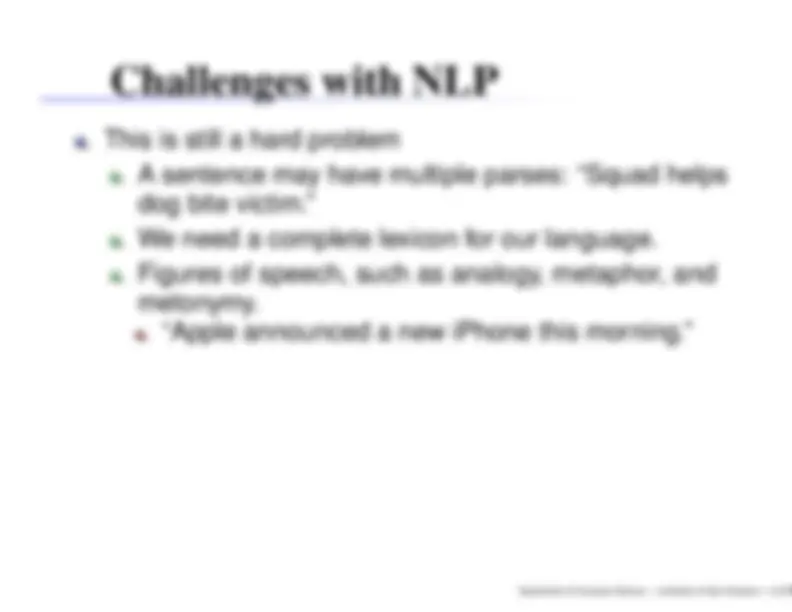
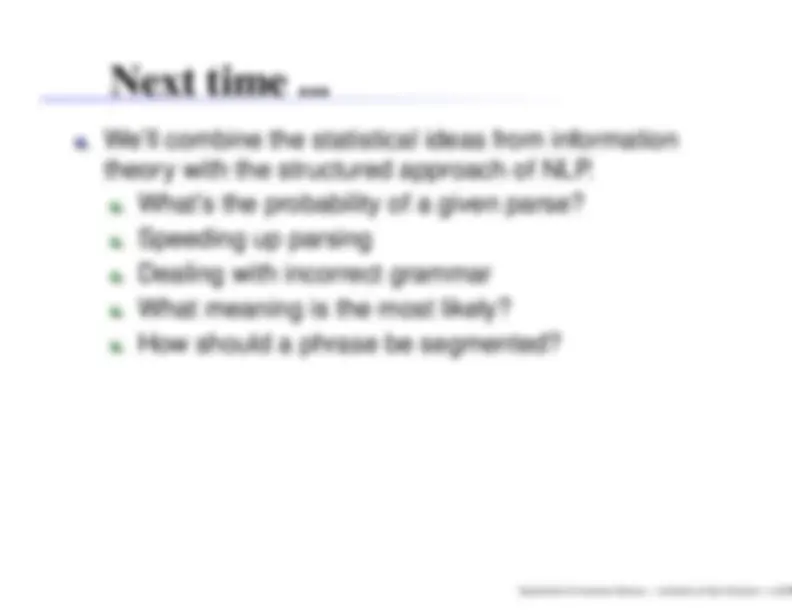


Study with the several resources on Docsity

Earn points by helping other students or get them with a premium plan


Prepare for your exams
Study with the several resources on Docsity

Earn points to download
Earn points by helping other students or get them with a premium plan
Community
Ask the community for help and clear up your study doubts
Discover the best universities in your country according to Docsity users
Free resources
Download our free guides on studying techniques, anxiety management strategies, and thesis advice from Docsity tutors
An introduction to speech acts and natural language processing from the perspective of artificial intelligence. It covers the history of communication as a set of speech acts, the distinction between formal and natural languages, the structure of natural languages through grammars and classes of languages, and the process of parsing sentences. The document also discusses the challenges and advantages of top-down and bottom-up parsing, as well as chart parsing.
Typology: Study notes
1 / 33

This page cannot be seen from the preview
Don't miss anything!


























Department of Computer Science — University of San Francisco – p.1/
Department of Computer Science — University of San Francisco – p.3/
Department of Computer Science — University of San Francisco – p.4/
|^ fish InTansVerb^ ->^ sit^ |^
sleep^ |^ eat TransVerb^ ->^ isAdjective^ ->^ happy^ |
sad^ |^ tired Adverb^ ->^ happily^ |^
quietly Gerund^ ->^ sleepingArticle^ ->^ the^ |^ a |
an Conjunction^ ->^ and^ |
or^ |^ but
Department of Computer Science — University of San Francisco – p.6/
NP^ ->^ Noun^ |^ Article
Noun VP^ ->^ InTransVerb^ |^
TransVerb^ Adjective^
|^ InTransVerb^ Adverb
InTransVerb^ Gerund
Department of Computer Science — University of San Francisco – p.7/
Department of Computer Science — University of San Francisco – p.9/
Department of Computer Science — University of San Francisco – p.10/
S NP VP Article Noun GerundIntransVerb^ "The" "cat""sleeping""is"^ Department of Computer Science — University of San Francisco – p.12/
Department of Computer Science — University of San Francisco – p.13/
-^ dead^ end^ -^ backtrack. [S:^ [[Article:^ ?]^ [Noun:
[S:[[Article:^ The]^ [Noun:
[S:[[Article:^ The]^ [Noun:
cat]]^ [VP^ :^ ?]] [S:[[Article:^ The]^ [Noun:
cat]]^ [VP^ :^ [Verb^ :?
]]^ - dead^ end,backtrack. [S:[[Article:^ The]^ [Noun:
cat]]^ [VP^ :^ [[TransVerb:
?]^ [Adv:^ ?]]]^ -dead end,^ backtrack.[S:[[Article:^ The]^ [Noun:
cat]]^ [VP^ :^ [[IntransVerb:
?]^ [Gerund: ?]]][S:[[Article:^ The]^ [Noun:
cat]]^ [VP^ :^ [[IntransVerb:
is]^ [Gerund: ?]]][S:[[Article:^ The]^ [Noun:
cat]]^ [VP^ :^ [[IntransVerb:
?]^ [Gerund: sleeping]]]
Department of Computer Science — University of San Francisco – p.15/
Department of Computer Science — University of San Francisco – p.16/
Succ:^ [[Art^ ’cat^ is
sleeping’]^ , [‘the’^ Noun^ ’is^ sleeping’]
[’the^ cat’^ InTransVerb
’sleeping’]] S1:^ [Art^ ’cat^ is^ sleeping’]
Succ:^ [[Art^ Noun^ ’is
sleeping’]^ [Art ’cat’^ InTransVerb^ ’sleeping’]
[Art^ ’cat^ is’^ Gerund]] S2:^ [[Art^ Noun^ ’is^ sleeping’]
Succ:^ [[NP^ ’is^ sleeping’]
[Art^ Noun IntransVerb^ ’sleeping’]
[Art^ Noun^ ’is’^ Gerund]] S3:^ [NP^ ’is^ sleeping’]
Succ:^ [[NP^ InTransVerb
’sleeping’]^ [NP^ ’is’ Gerund]]S4:^ [NP^ InTransVerb^
’sleeping’]^ Succ:^ [NP
IntransVerb^ Gerund] S5:^ [NP^ IntransVerb^
Gerund]^ Succ:^ [NP^ VP] S6:^ [NP^ VP]^ Succ:^ [S]
Department of Computer Science — University of San Francisco – p.18/
Department of Computer Science — University of San Francisco – p.19/